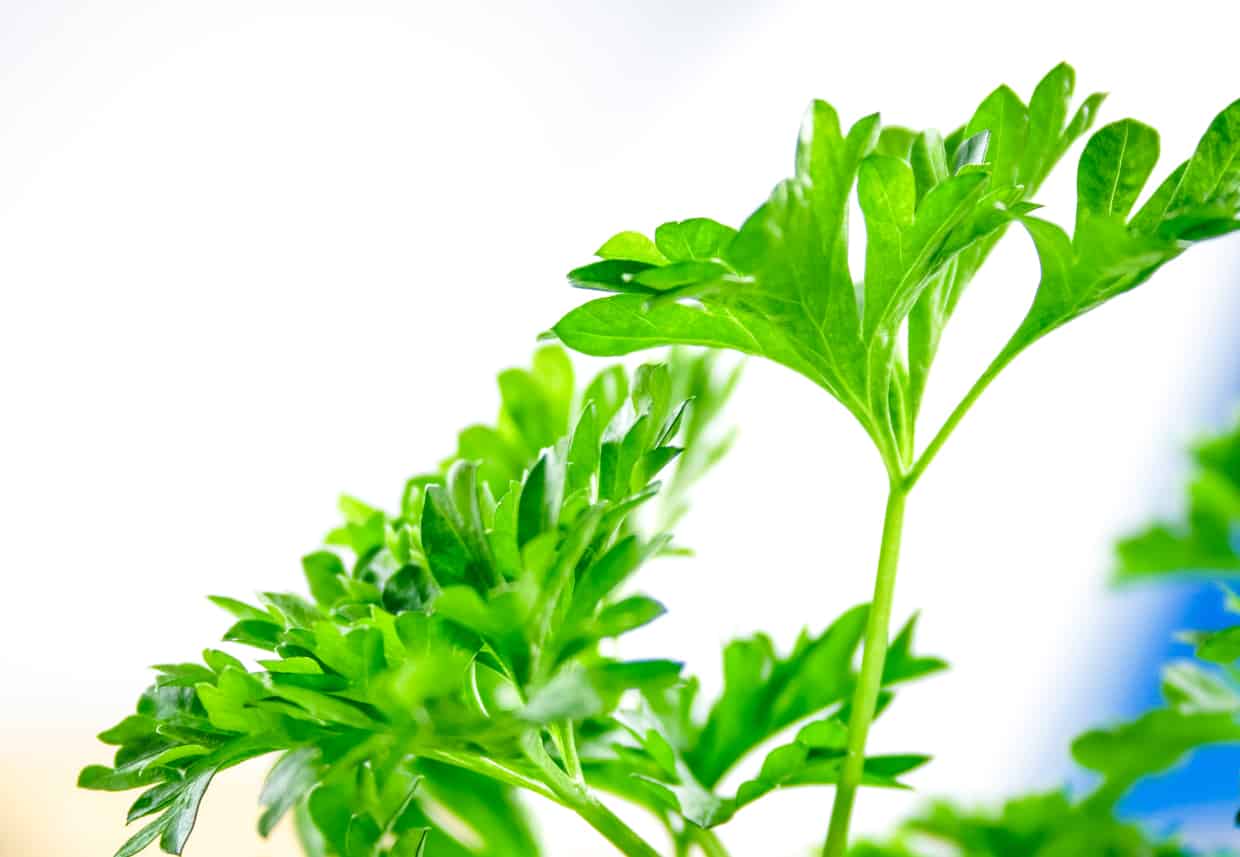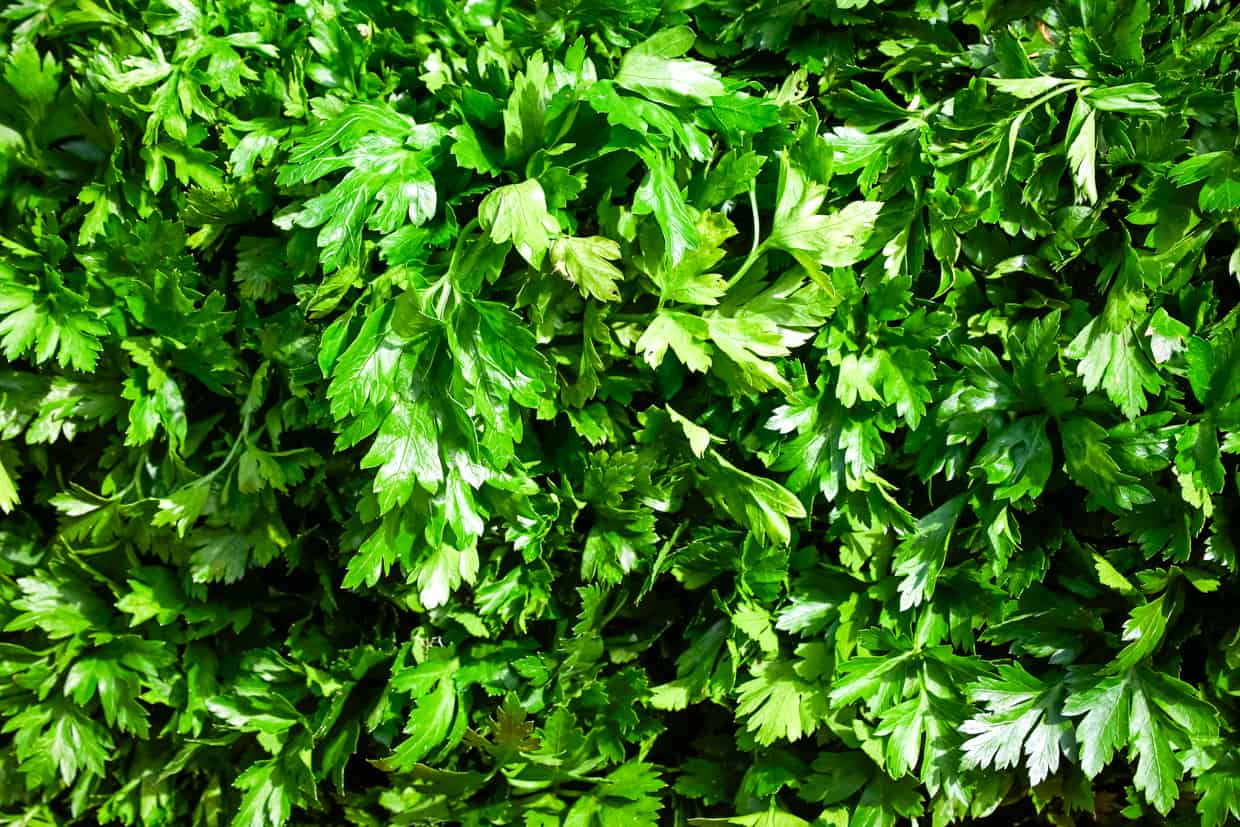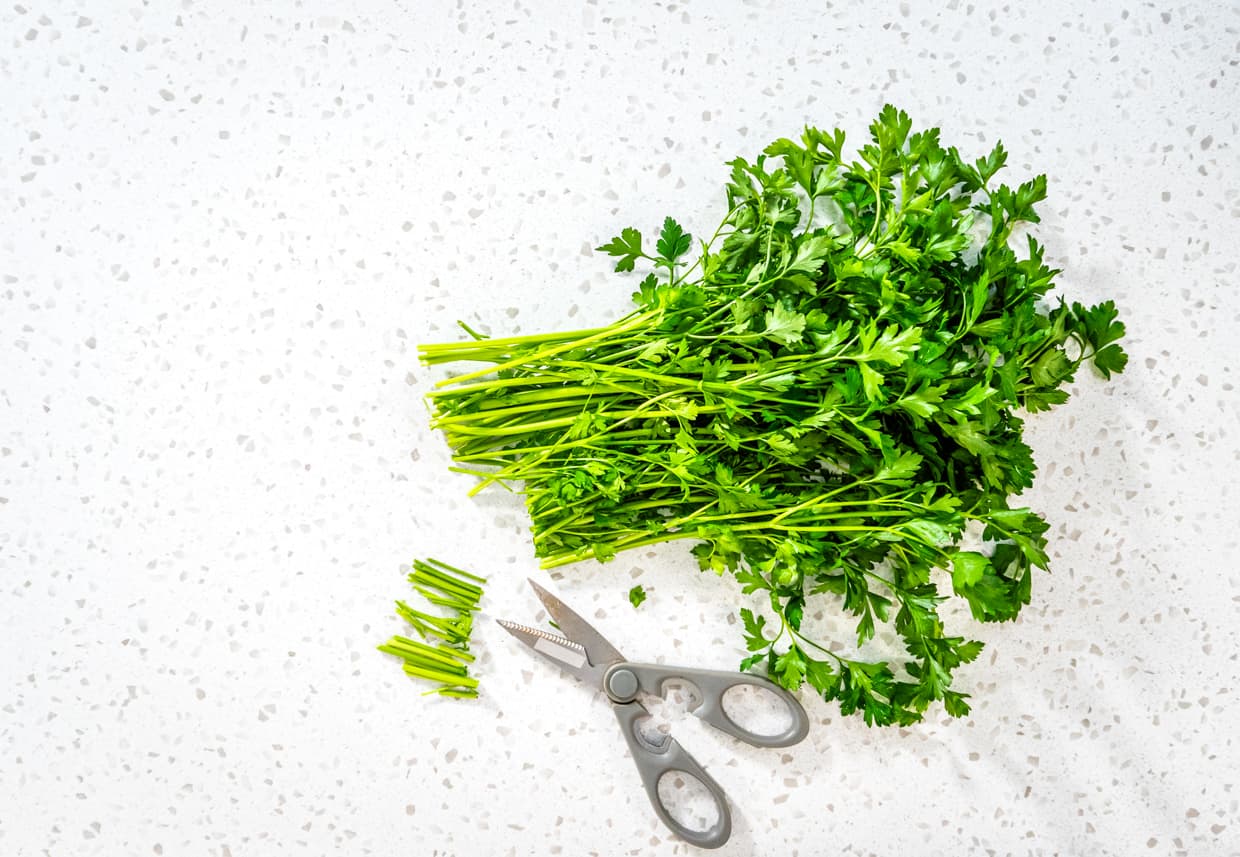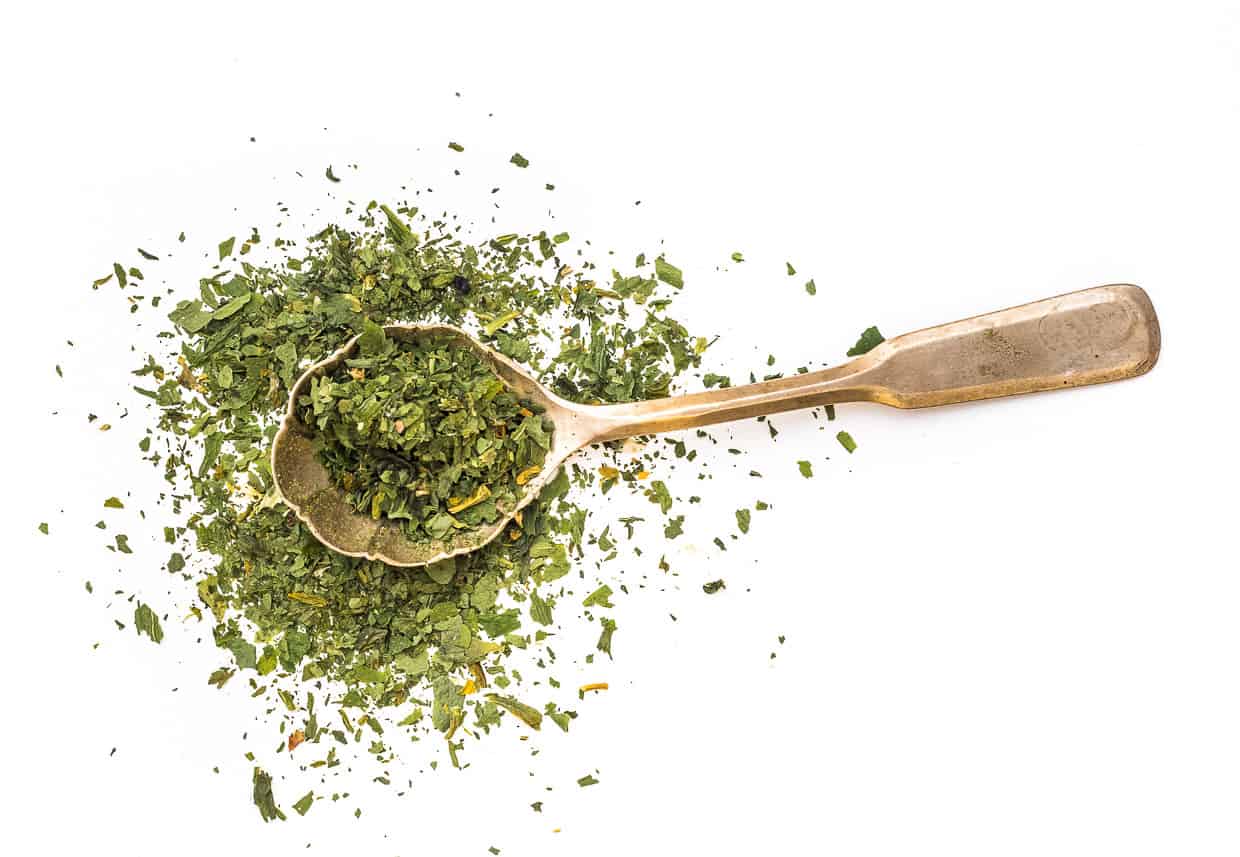Parsley is a versatile herb that adds a touch of freshness and elegance to your favorite dishes. This guide will provide all the information you need to prep, cook and store parsley to preserve its texture and maximize its flavor.

Picking your parsley
Fresh parsley is a bright green herb with feathery leaves and branched, hollow stems. While it is not as soft in texture as basil or cilantro, it is classified as a soft herb.
There are two types of parsley: curly parsley, which has tightly curled leaves, and Italian or flat-leaf parsley, which has flat leaves with notched edges.
Parsley is available year-round at most grocery stores, but it is in season from summer through autumn. Fresh parsley is relatively easy to grow and can be planted in a small kitchen garden or outdoors. It requires ample sun and water, as well as adequate drainage for its roots.
To pick the freshest bunch of parsley, look for bunches that are bright green, fragrant and free of black or brown spots. The parsley should appear healthy, with no wilted leaves or stems and no mushy spots.

What does parsley taste like?
Parsley is one of the most versatile herbs, with a clean, grassy taste and earthy and peppery notes. It has a vegetal and fresh scent similar to that of celery.
How to properly clean parsley
To clean your parsley, remove any discolored leaves. If you purchased the parsley at the market, remove any rubber bands, twist ties or packaging that came with it. Then run the bunch under cold, fresh water, removing any visible dirt or debris.
Remove any excess moisture from the parsley before storing. You can pat it dry with paper towels, run it through a salad spinner or let it dry on the kitchen counter.

Storage methods
While parsley is hardier than many soft herbs, it will wilt if not properly stored. There are a few methods by which you can store fresh parsley.
The first option is to store parsley in a glass. Submerge the parsley stems in a glass partially filled with water and transfer it to the fridge.
“To keep my parsley fresh for as long as possible, I first trim the stems and remove any damaged leaves before placing it in a jar with about an inch of water. Then, I cover it loosely with a storage baggie secured by a rubber band. I store it in the refrigerator and change the water every few days and the parsley remains fresh and flavorful for at least two weeks.”
— Sara Nelson, Real Balanced
The second option is to store parsley wrapped in a damp paper towel in a plastic or resealable silicone bag in the refrigerator. It will stay fresh for several days.
The third option is to dry your parsley. You can dehydrate it by placing it on a sheet tray in your oven at the lowest possible temperature, using a food dehydrator, or placing parsley leaves between two paper towels and microwaving them until they are dried and brittle. Once dried, crush the parsley leaves by hand or using a mortar and pestle and store them in a jar or other airtight container in a cool and dry place.

You can also freeze parsley in ice cubes. It will not be as flavorful as fresh parsley but it works well added to soups, stews and sauces.
To freeze fresh parsley, chop the leaves and stems, fill the compartments of an ice cube tray with a bit of the chopped parsley, then cover with water. Place the ice cube trays in the freezer. Use frozen parsley within about four to six months.
FDL’S 75 Best Bites

Our cookbook with 75 tasty recipes will be your go-to kitchen companion for easy dinners with ad-free recipes right at your fingertips. Crafted by experienced chefs and recipe developers, this collection offers a treasure trove of tried-and-true dishes that make mealtime a breeze.
Get the Recipe: FDL’S 75 Best Bites
How to cook with fresh parsley
Parsley is used in a wide variety of dishes. It is often used to add fresh flavor to finished dishes, such as pasta, as a garnish, or it can be incorporated into sauces, soups and salads.
You can also use parsley as a garnish for drinks.
“Parsley is one of the best garnishes for a Bloody Mary. It looks elegant and adds a fragrant aroma as you take a sip, making the whole experience a feast for the senses.”
— Susannah Brinkley Henry, Feast + West
While hardy herbs like rosemary can handle higher temperatures and longer cooking times, it is best to add parsley near the end of your cook time or in a preparation that requires no cooking.
“We love using parsley in almost every meal. It makes everything look and taste so much better. Even the kids love its taste. We sprinkle it on pasta, toss it in salads or use it as a decorative garnish to jazz up the taste and look of a meal.”
— Tamara, Thriving in Parenting

Parsley is used all over the world, particularly in European cuisines, like Italian and French cuisine, Brazilian, Middle Eastern and American cuisines.
When adding fresh parsley to your cooking, you can roughly or finely chop the parsley leaves or leave them whole. You can also chop the stems and add them to your dish. The stems are a bit coarser in texture but provide excellent flavor.
Whether you use the stems or just the parsley leaves is a matter of personal preference. Try the stems in a blended application like chimichurri sauce if you do not like their texture.
Final thoughts
Parsley is classified as a soft herb. It needs to be cleaned and stored accordingly. Start by choosing a fragrant bunch of parsley with bright green leaves, no brown, black or yellow leaves and no wilting.
You can store fresh parsley in several ways. Store trimmed and cleaned parsley in a glass container in the refrigerator for herbs that will last up to two weeks. You can also store parsley wrapped in a damp paper towel in a plastic bag in the fridge. Parsley can be dried and stored for later use or frozen as ice cubes to add a pop of flavor to soups, stews and sauces.
To achieve the best texture and flavor, add fresh parsley near the end of your cooking time or use it as a garnish. Try fresh parsley in dishes from various countries and cuisines to discover how much flavor this delicious and versatile herb can provide.
Gen is a professional chef, writer and editor living in Southern California. She is the owner and recipe creator behind Two Cloves Kitchen, a food site featuring contemporary, California-inspired recipes. She has edited over 20 novels, short stories and essays for publication.